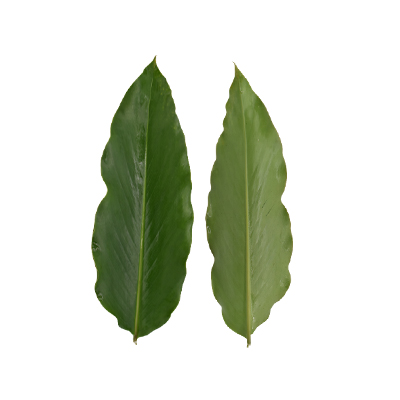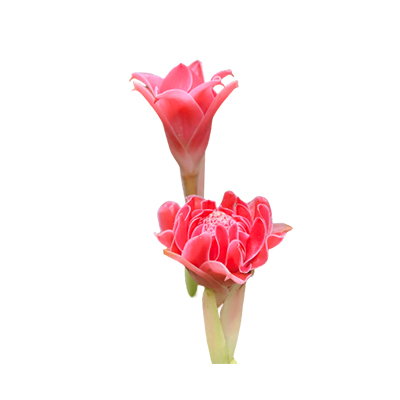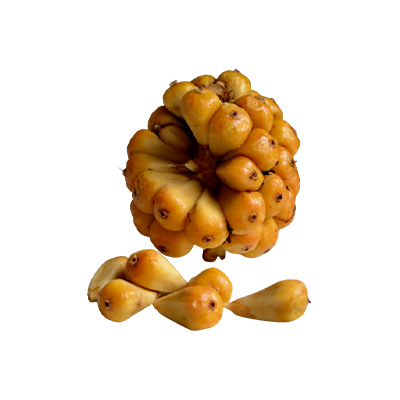Torch Ginger
Etlingera elatior (Jack) R.M.Sm.
Zingiberaceae
Location in our garden
Principal
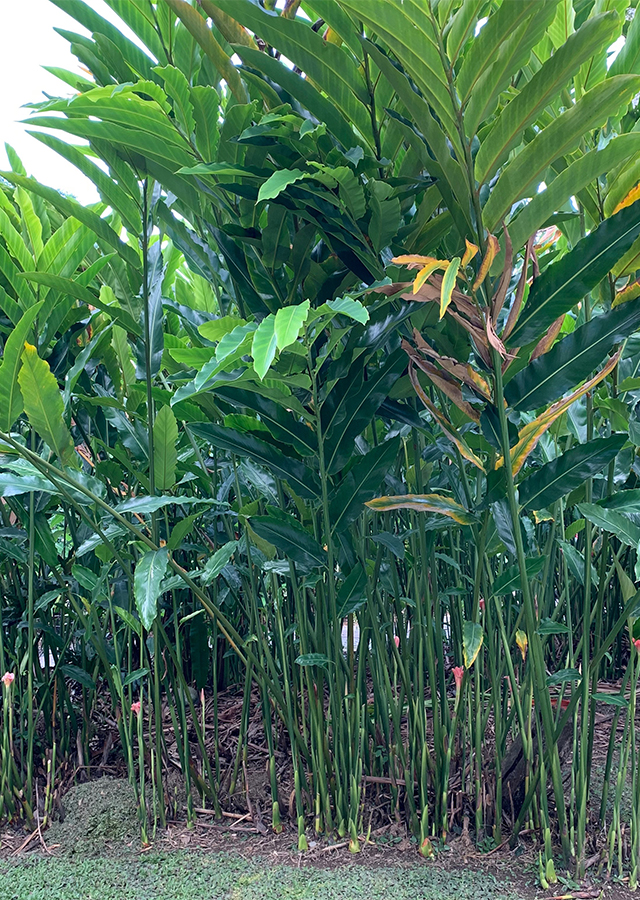
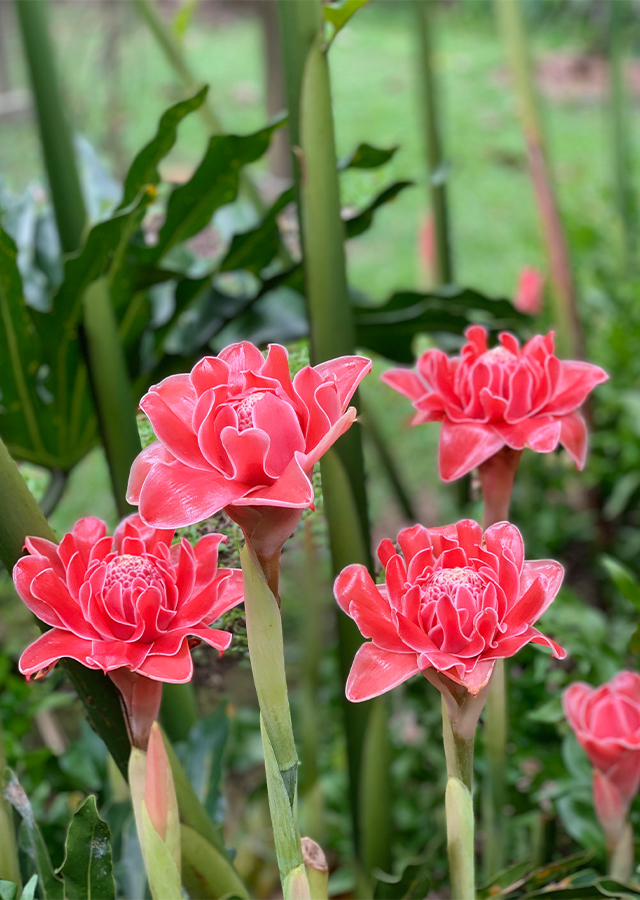

Synonym
Alpinia acrostachya Steud.
Alpinia diracodes Loes.
Alpinia elatior Jack
Habitus
Herbaceous. Torch ginger (Etlingera elatior) is a species of an herbaceous perennial plant, growing up to 5 or 6 m.
Part Used
Leaves
Flowers
Fruit
Stem
Rhizome
Growing Requirements
Full Sunshine
Habitat
Forest
Roadside
Terrestrial
Overview
Torch ginger (Etlingera elatior) is native to Indonesia, Malesia, and southern Thailand. It is distributed throughout South-East Asia, New Guinea, the Bismarck Archipelago, the Philippines, Australia (Queensland), and Polynesia. However, the species is widely cultivated and can be found naturalized in tropical and subtropical regions worldwide. The plant is used locally as food and medicine.
Vernacular Names
Kecombrang; Bunga kecombrang; or, Honje (Indonesia), Huo ju jiang (Chinese), Kantan (Malaysia), Kaalaa (Thailand), Boca de dragón (Spanish), Antorcha (Puerto Rico), ‘Awapuhi ko‘oko‘o (USA/Hawaii), Bastón del Obispo (Colombia), Bastón de emperador (Costa Rica)
Agroecology
E. elatior grows in primary and secondary forest, forest edges, disturbed areas, and secondary vegetation near villages and along roadsides. It prefers a position in full sun or partial shade. It grows best at mean annual temperatures ranging from 10 °C to 35 °C. Succeeds in moist, fertile, but well-drained soil. This plant can flower all year round.
Morphology
- Pseudostems (shoots) - 3–6 m tall.
- Leaves - are green in color, hairless, lanceolate in shape, and measuring about 50-70 cm in length and 10-14 cm in width.
- Inflorescence - has a long peduncle measuring 1-1.5 m and rose well above the ground, densely congested with sterile bracts and fertile bracts; fertile bracts have a single bracteole and flower, inner ones are narrow and outer ones are broader and becoming transitional with involucral bracts.
- Flowers - are bright red with yellow margin in color, individual flowers emerge from between the colorful bracts and have a dark red labellum (lip petal); floral bracts are similar to involucral bracts but pinkish and smaller; bracteoles are tubular, 2 cm, deeply split on 1 side; the calyx is 3–4 cm, with 3- toothed apex; corolla is pink to red, sometimes white.
- Fruiting - are capsules with many black seeds, greenish or reddish in color measuring about 2-2.5 cm in diameter; fruiting heads measure 10 cm × 10 cm.
Cultivation
- It is propagated by seeds and the division of their rhizomes.
Chemical Constituents
Saponins, flavonoids (kaempferol and quercetin), polyphenol, essential oils, anthraquinone, tannins, chlorogenic acid, caffeoylquinic acids.
Traditional Medicinal Uses
- The plant considered aperient, resolvent, expectorant, deobstruent, carminative.
- Studies suggested antioxidant, antimicrobial, cytotoxic, antifungal, anti-melanoma properties.
- Used as a natural ingredient in cosmetic formulation, the inflorescence of torch ginger is also used for skin whitening, anti-aging, and lipstick preparation.
- In Malaysia, fruit is used to treat earache, and leaves are used for cleaning wounds.
- In Indonesia, used for the treatment of thyroid fever symptoms like mouth sores, diarrhea, coughs, and lack of appetite.
- In southeastern Asia, it is believed that a daily intake of raw inflorescence can reduce diabetes and hypertension.
- Mixed with other aromatic herbs, used by women for postpartum bathing to remove body odor.
Part Used
Reference Sources
- Abdelmageed, A.H.A., Faridah, Q.Z., Norhana, F.M.A., Julia, A.A., & Kadir, A.A. (2011). Micropropagation of Etlingera elatior (Zingiberaceae) by using axillary bud explants. Journal of Medicinal Plants Research 5(18): 4465-4469.
- Acevedo-Rodríguez, P., & Strong, M.T. (2005). Monocots and Gymnosperms of Puerto Rico and the Virgin Islands. Taxon 52(1): 1-415.
- CABI. (2014). Invasive Species Compendium: Etlingera elatior (torch ginger). Centre for Agriculture and Bioscience International (CABI) Web. https://www.cabi.org/isc/datasheet/109802 (Accessed 20-02-2021)
- Chacon, E. (2009). Las plantas invasoras en Costa Rica: Cuáles acciones debemos realizar. Revista Biocenosis 22: 31-33.
- Fern, K. (2021). Useful Tropical Plants: Etlingera elatior. Useful Tropical Plants Database Web. http://tropical.theferns.info/viewtropical.php?id=Etlingera+elatior (Accessed 20-02-2021)
- Flora of China Editorial Committee. (2014). Flora of China: Etlingera elatior. Missouri and Cambridge: Missouri Botanical Garden and Harvard University Herbaria. http://www.efloras.org/florataxon.aspx?flora_id=2&taxon_id=200028379 (Accessed 29-11-2021)
- GlobinMed. (2021). Kantan Flower. Global Information Hub On Integrated Medicine (GlobinMed) Web. https://www.globinmed.com/index.php?option=com_content&view=article&id=105683:etlingera-elatior-jack-r-m-smith&catid=209&Itemid=143 (Accessed 20-02-2021)
- Hammel, B.E., Grayum, M.H., Herrera, C., & Zamora, N. (2003). Manual of plants of Costa Rica. Vol. III. (Manual de Plantas de Costa Rica. Vol. III.) Monographs in Systematic Botany from the Missouri Botanical Garden 93: 1-884.
- Ibrahim, H., & Setyowati, F.M. (1999). Etlingera Giseke. In: Plant Resources of South-East Asia No. 13: Spices, de Gusman, C.C., & Siemonsma, J.S. (eds.). Leiden-Netherlands: Backhuys Publisher. pp. 123-126.
- Juwita, T., Puspitasari, I.M., & Levita, J. (2018). Torch Ginger (Etlingera elatior): A review on its botanical aspects, phytoconstituents, and pharmacological activities. Pakistan Journal of Biological Sciences 21: 151-165.
- Ravindran, P. N. (2017). The Encyclopedia of Herbs & Spices. Volumes 1 and 2. Wallingford: CAB International.
- Sakai, S., Kawakita, A., Ooi, K., & Inoue, T. (2013). Variation in the strength of association among pollination systems and floral traits: evolutionary changes in the floral traits of Bornean gingers (Zingiberaceae). American Journal of Botany 100(3): 546-555.
- StuartXchange. (2021). Philippine Medicinal Plants: Torch ginger. StuartXchange Web. http://www.stuartxchange.org/TorchGinger.html (Accessed 20-02-2021)


